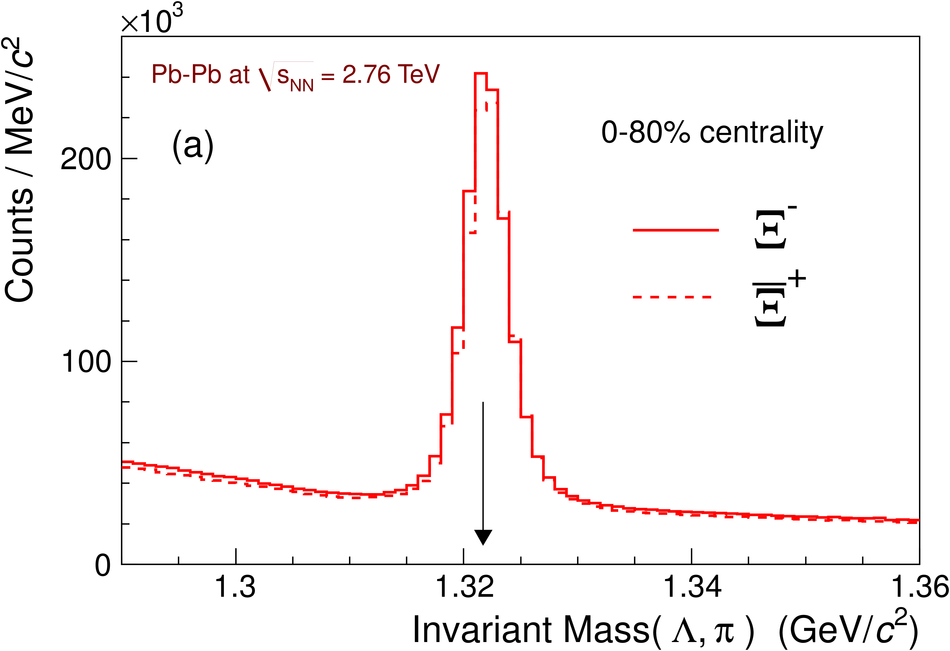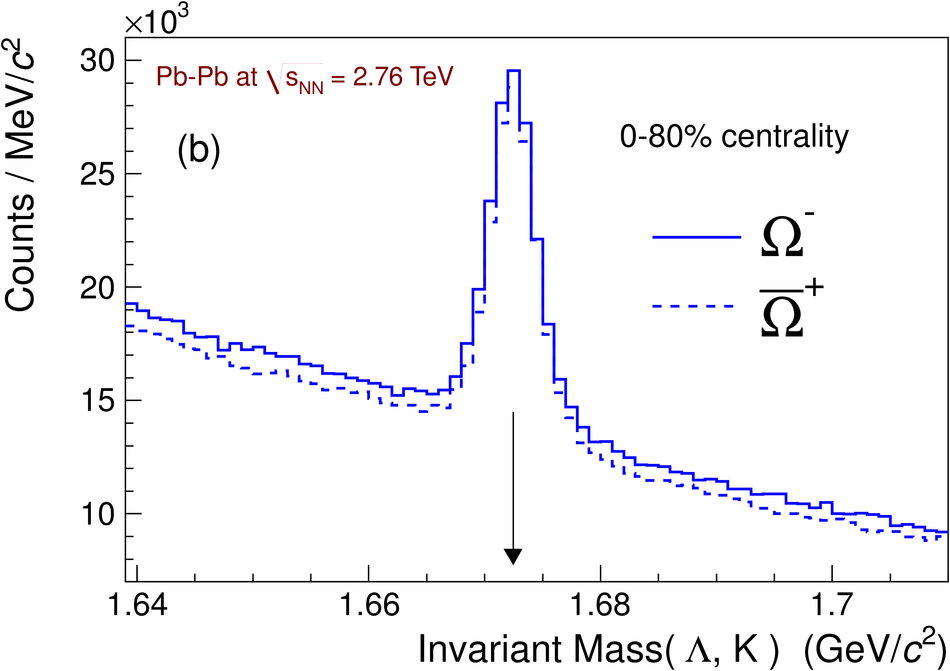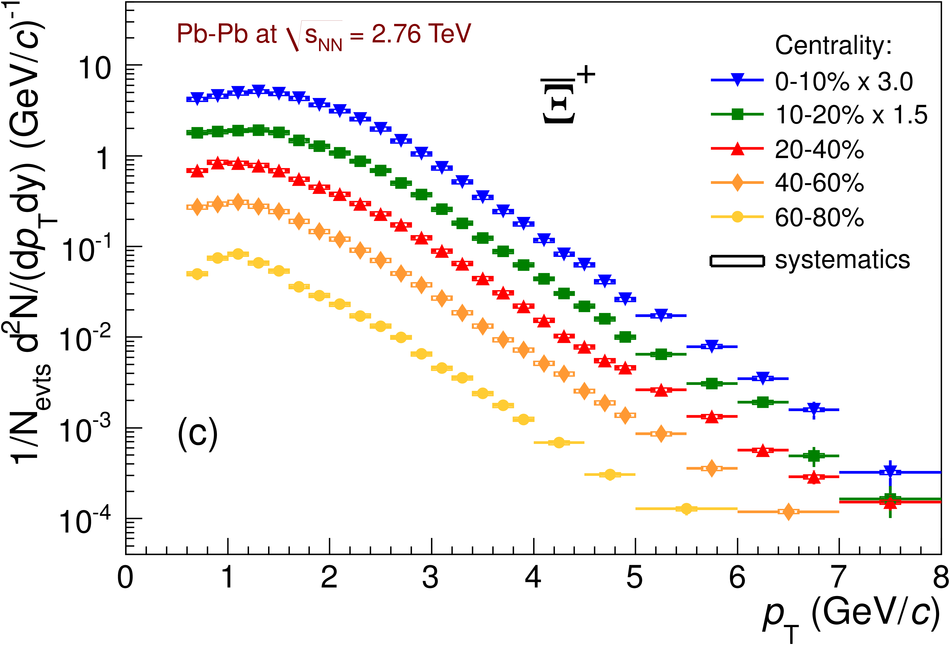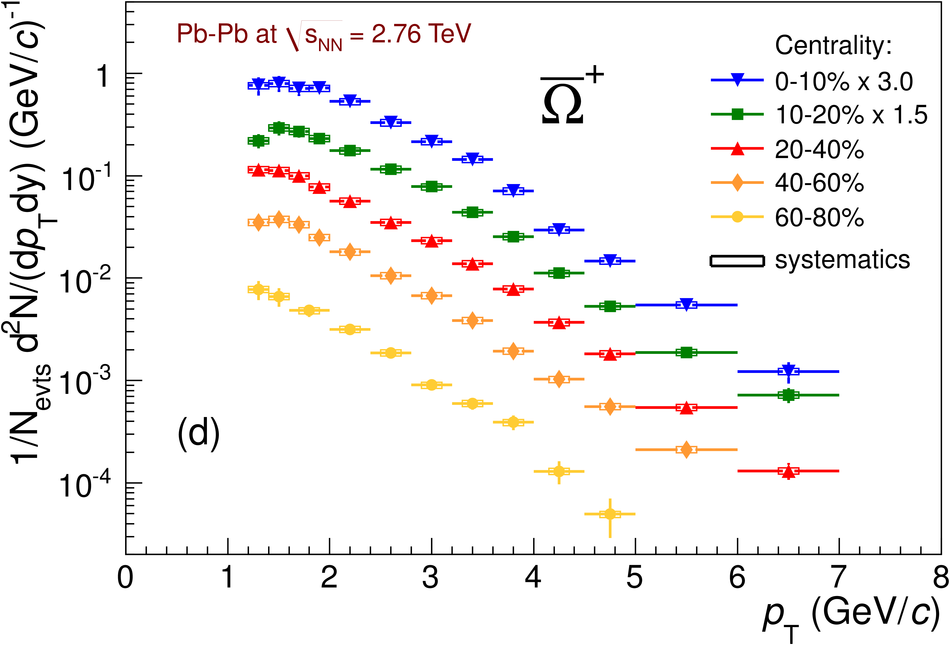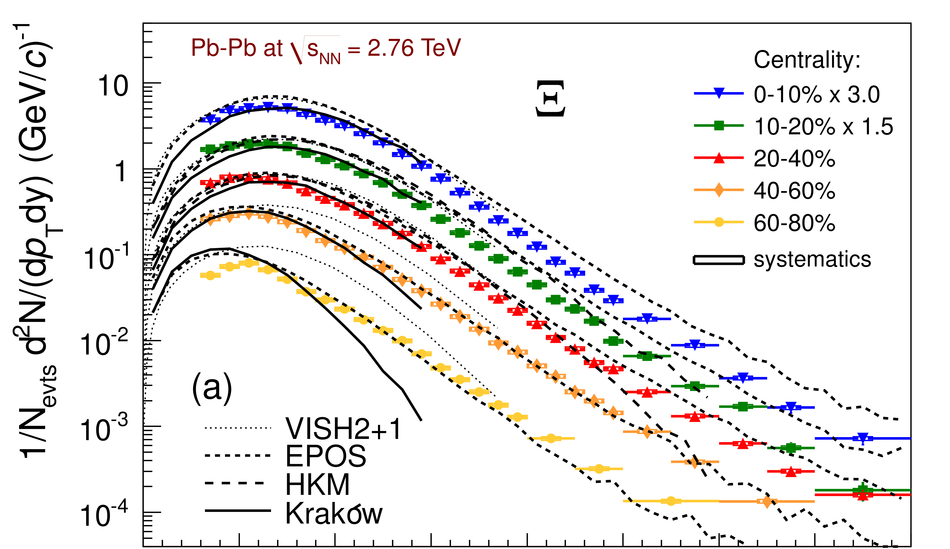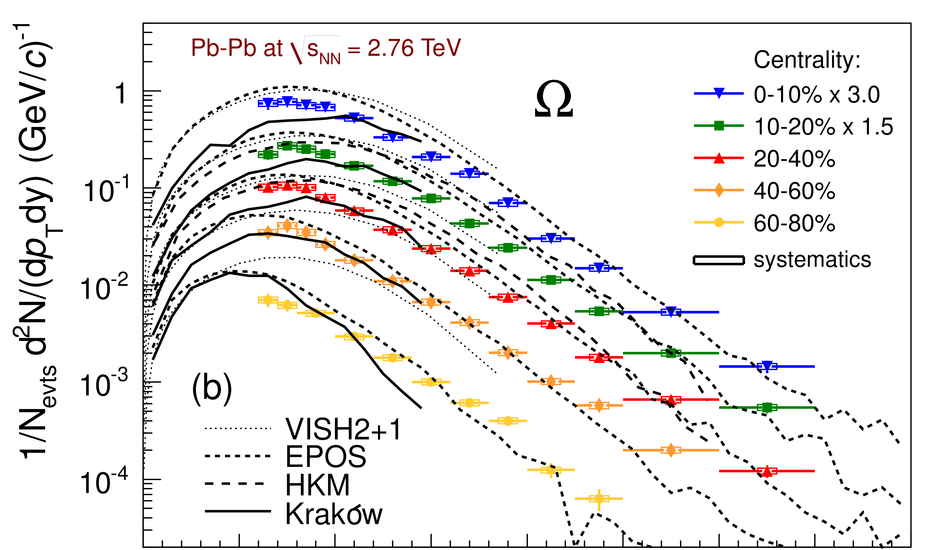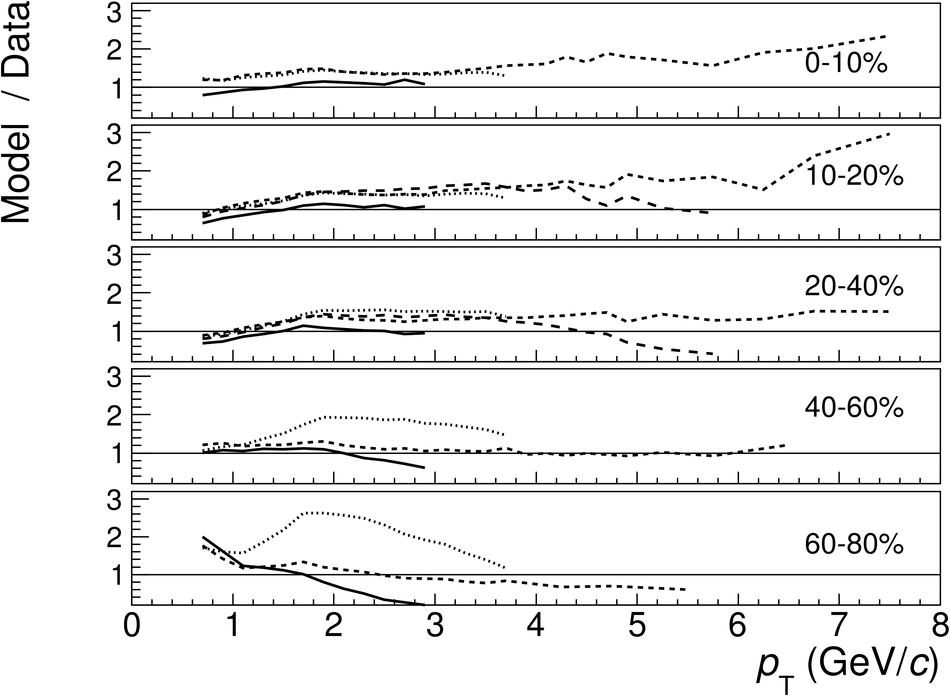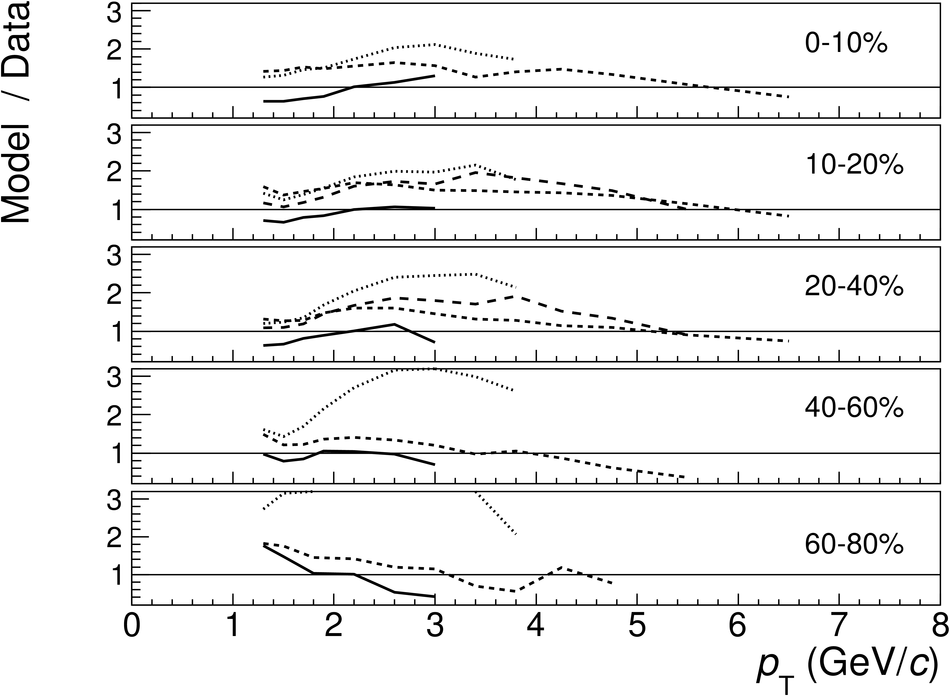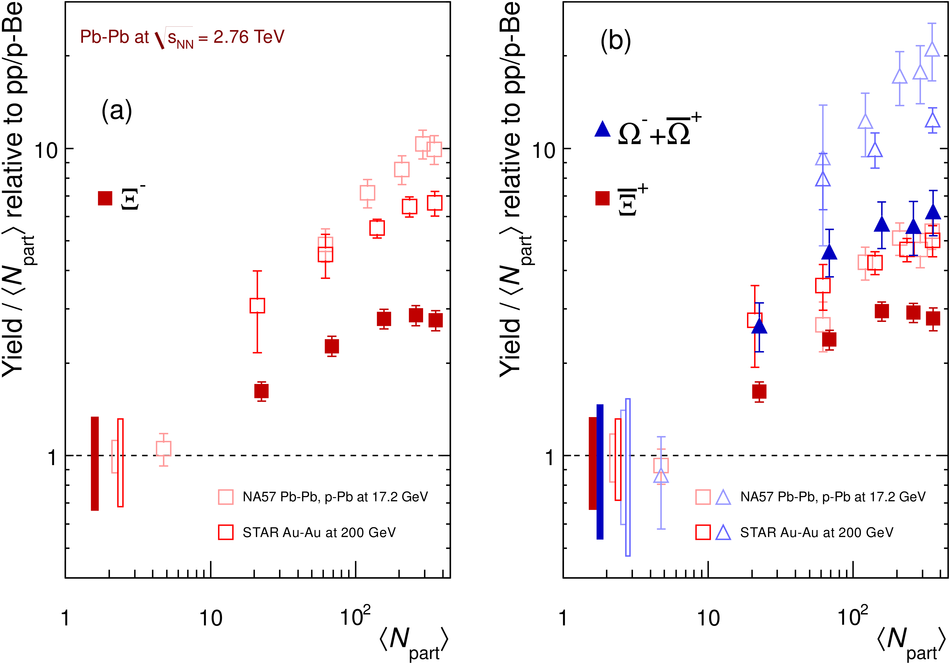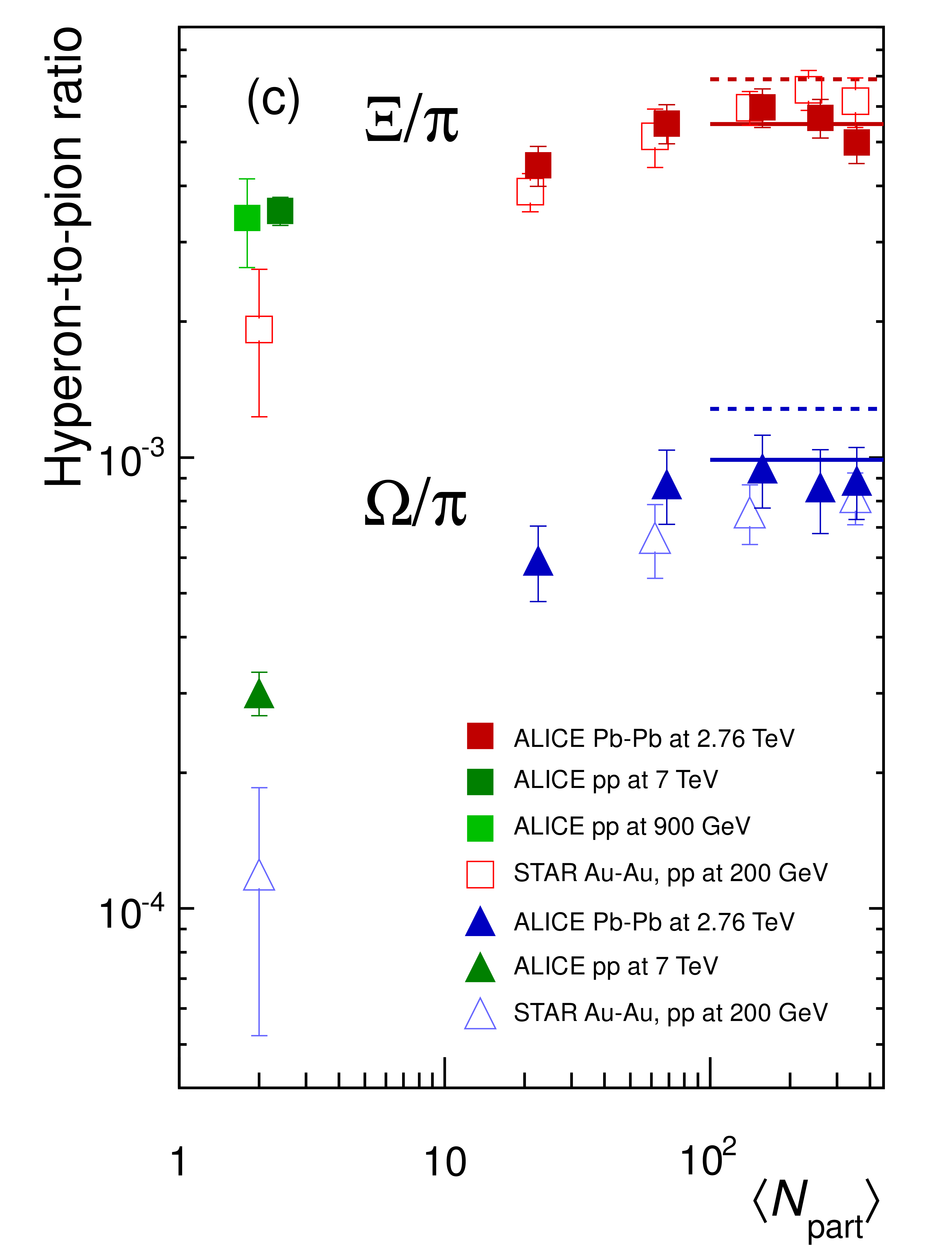The production of ${\rm\Xi}^-$ and ${\rm\Omega}^-$ baryons and their anti-particles in Pb-Pb collisions at $\sqrt{s_{\rm NN}}$ = 2.76 TeV has been measured using the ALICE detector. The transverse momentum spectra at mid-rapidity ($|y| < 0.5$) for charged $\rm\Xi$ and $\rm\Omega$ hyperons have been studied in the range $0.6 < p_{\rm T} < 8.0$ GeV/$c$ and $1.2 < p_{\rm T} < 7.0$ GeV/$c$, respectively, and in several centrality intervals (from the most central 0-10% to the most peripheral 60-80% collisions). These spectra have been compared with the predictions of recent hydrodynamic models. In particular, the Krak${\'o}$w and EPOS models give a satisfactory description of the data, with the latter covering a wider $p_{\rm T}$ range. Mid-rapidity yields, integrated over $p_{\rm T}$, have been determined. The hyperon-to-pion ratios are similar to those at RHIC: they rise smoothly with centrality up to $\langle N_{\rm part}\rangle$~150 and saturate thereafter. The enhancements (yields per participant nucleon relative to pp collisions) increase both with the strangeness content of the baryon and with centrality, but are less pronounced than at lower energies.
Phys. Lett. B 728 (2014) 216-227, Phys. Lett. B 734 (2014) 409-410 (erratum)
HEP Data
e-Print: arXiv:1307.5543 | PDF | inSPIRE
CERN-PH-EP-2013-134

